Kenya is one of the most biodiversity rich countries in the world. It has varied ecosystems that support some important, unique, endemic, and endangered flora and fauna. I have learned to know all of them during my 10 or so previous photography trips to Kenya. As on senior citizen (70+), I have more and more preferred to stay in a single location and not to rush all over.This time I decided to stay two weeks in Tumbili Cliff Lodge at the western shores of Lake Baringo. This is also the home district of my great guide (and also a friend), Joe Aengwo (Phone/Whatsapp: +254 727 856048, Email joe.aengwo@gmail.com). The drive from Nairobi’s Jomo Kenyatta airport took about 4 hours.
We spent a good amount of time around the lodge compound; the adjacent private land had rich vegetation which had attracted assortment of birds, bees, butterflies and flourishing flowers which was all the results of the recent heavy rains all over the Horn of Africa. We were so lucky with the weather. We had only one and a half days when the photographic conditions were poor!
I have previously photographed about half of Kenya’s thousand bird species. I used this tour to widen the spectrum to other topics, like plants, insects and local ingenious tribes. In this report I will tell – a sum – what we found, since daily report could contain too much repetition. Now I have published about 70 bird species of this tour on my web site (500px.com/juhanivilpo). Those are the photos which I regarded more interesting than any of the previous ones. Only two “cameralifers” were found during this tour. The “non-bird-photos” are to be published on 500px.com/juhanivilpo2.

Tumbili Cliff Lodge and its territory within about 1km.
The three most interesting birds to me were African Pygmy Kingfisher, Grey-headed Bush Shrike, and Northern Crombec. Kingfisher spent several days in front of my camp by catching insects from the ground. This Bush Shrike had been our target during the four previous tours, without much success. This time it was calling in the canopy next to my camp. Crombec was several times visible in a tree about 5 m from the camp’s inside. The most beautiful bird to my eye was Beautiful Sundbird in Aloe Vera. The yard was also on the path of Vervet Monkeys, who visited every day.

Additional bird species close to the camp were: Mourning Collared Dove, Jacobin (Black-and-White) Cuckoo, Red-chested Cuckoo, African Scops Owl, Green Wood Hoopoe, Red-fonted Tinkerbird, Red-fronted Barbet, Lesser Honeyguide, Nubian Woodpecker, Pygmy Batis, Slate-coloured Boubou, Eastern Black-headed Oriole, African Paradise-flycatcher, Somali Tit, Grey Wren Warbler, Northern Brownbul, Brown Babbler, Rufous Chatterer, Rüppel’s Glossy Starling, Spotted Palm Thrush, Eastern Violet-backed Sunbird, White-browed Sparrow Weaver (a colony in the yard), and Red-cheeked Cordon-bleu. Several plant and “non-bird” animal species were also photographed around the camp.
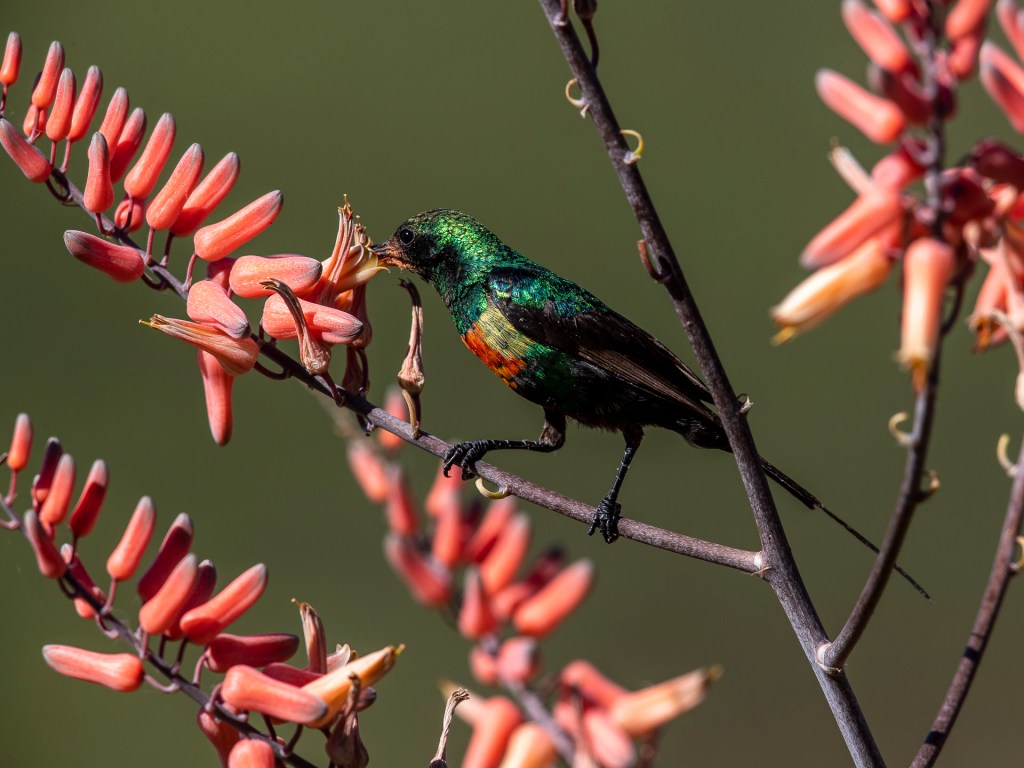
Although the lodge’s territory was very productive itself, we visited several nearby sites. These included forests, beaches, savannas and a nearby cliff, either by walking or sometimes by motorbike.
The Nearby Cliff Scenery, about 1 km from the camp. We noticed a pair of Verreaux’s Eagle soaring over our heads and occasionally dropping down on the rocky and steep cliff wall. We decided to follow their movement and we noticed that they were indeed nesting up high there on the cliff walls. For that reason, we decided to move on with other species and let breeding giants enjoy their peace! However, our attention back to the eagle was brought by two Lanner Falcons that were trying to mock the eagle continuously, and the eagle kept his territory.

Two Fan-tailed Raven were also spoiling for a fight! Both Lanner Falcon and Fan-tailed Raven continuously harassed the eagles, until one of them decided to use the heating thermals to soar high and we concluded that it was hunting time for them. It was also interesting to follow how the Eagle and two Baboons were occupying the same tree. Abyssinia Scimitarbills were also present there.
A Beach Nearby, less than 1 km from the camp. We visited the site twice. The best species there were Egyptian Goose, White-faced Whistling Duck, Goliath Heron, Black Egret, Little Egret, Great Heron, Squacco Heron, Hammerkop, Malachite Kingfisher.
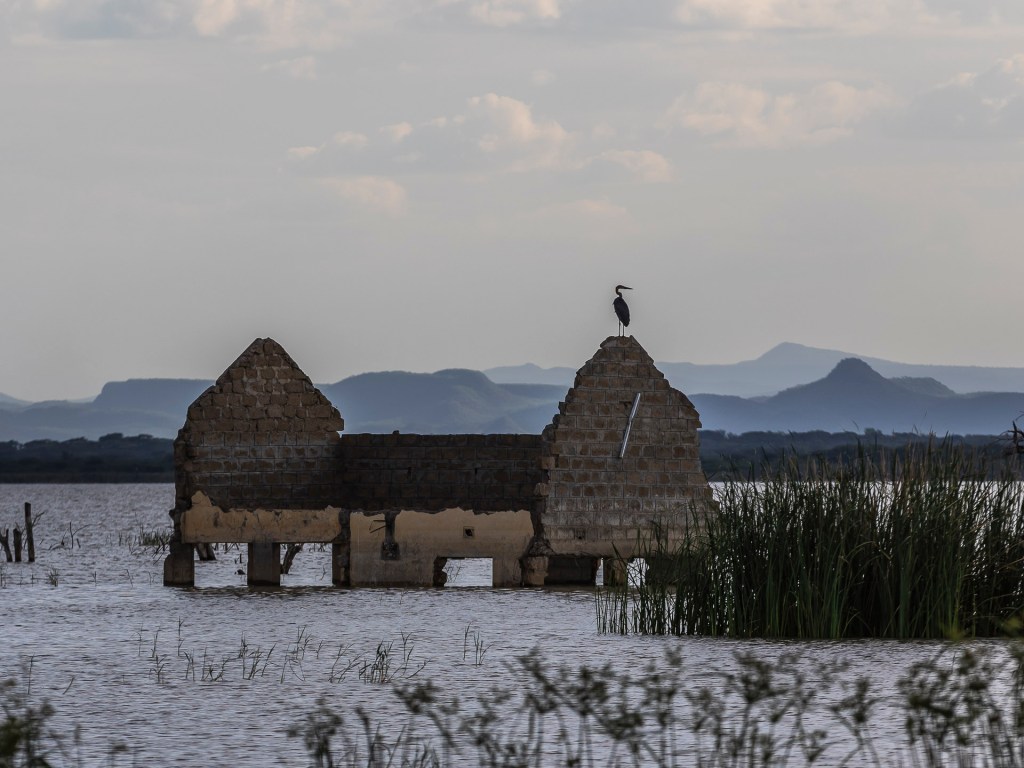
Lake Bogoria, about 50km from Leak Baringo, was visited on 20th November. The early start took place at 5:00 am, with our packed breakfast for Lake Bogoria National Reserve! Upon entering the park, we noticed that most of the flamingos were juvenile. The light also was not that great, due to the cloudy sky that morning. However, we were quit contended with what nature offered. Later on we used newly made road to access the inner part of the park! After about an hour or so we came across another huge concentration of both Lesser and Greater Flamingos forming a semi-circle around the shore. And from our elevated ground, we got some fantastic panoramic views of these crimson beauties. Some other birds, like Grey-headed Silverbill and White-winged Black Tern were also photographed, as was a giant tortoise.
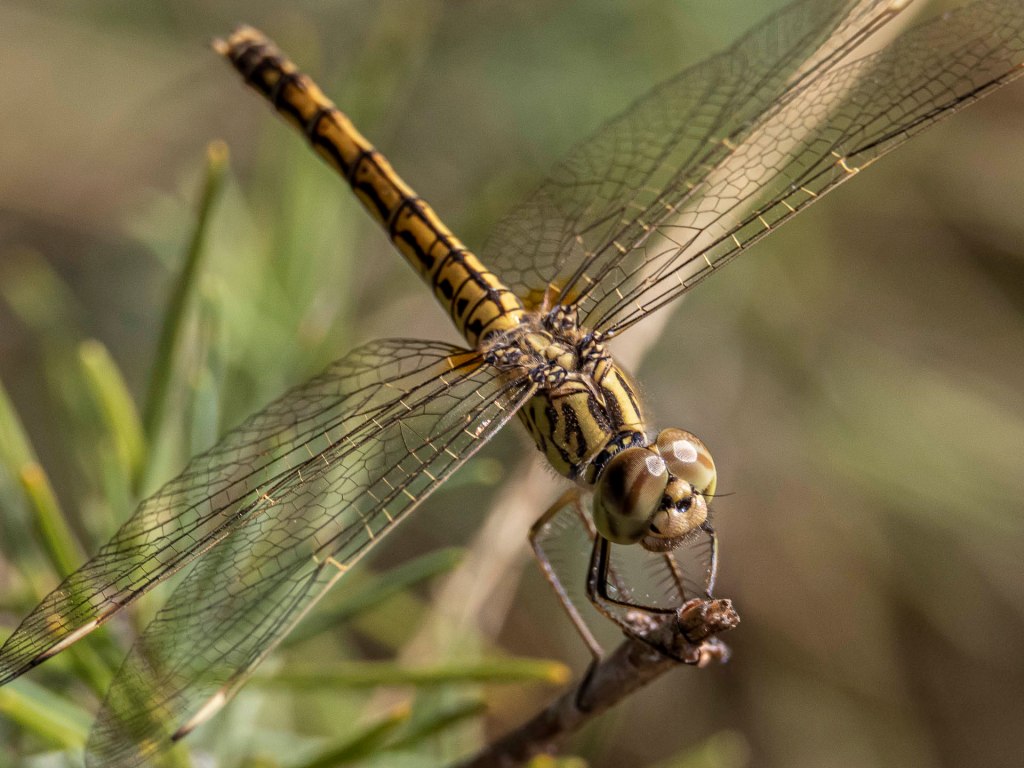
Indiginous People. We had an opportunity to meet people of two Kenyan indiginous tribes. On 21st November there was a fisherman of the local Njemps tribe just in front of our camp site at 5:30 am, before the sun was up. He gave us the permission to take photos of him on his traditional Njemps tribe fishing boat.
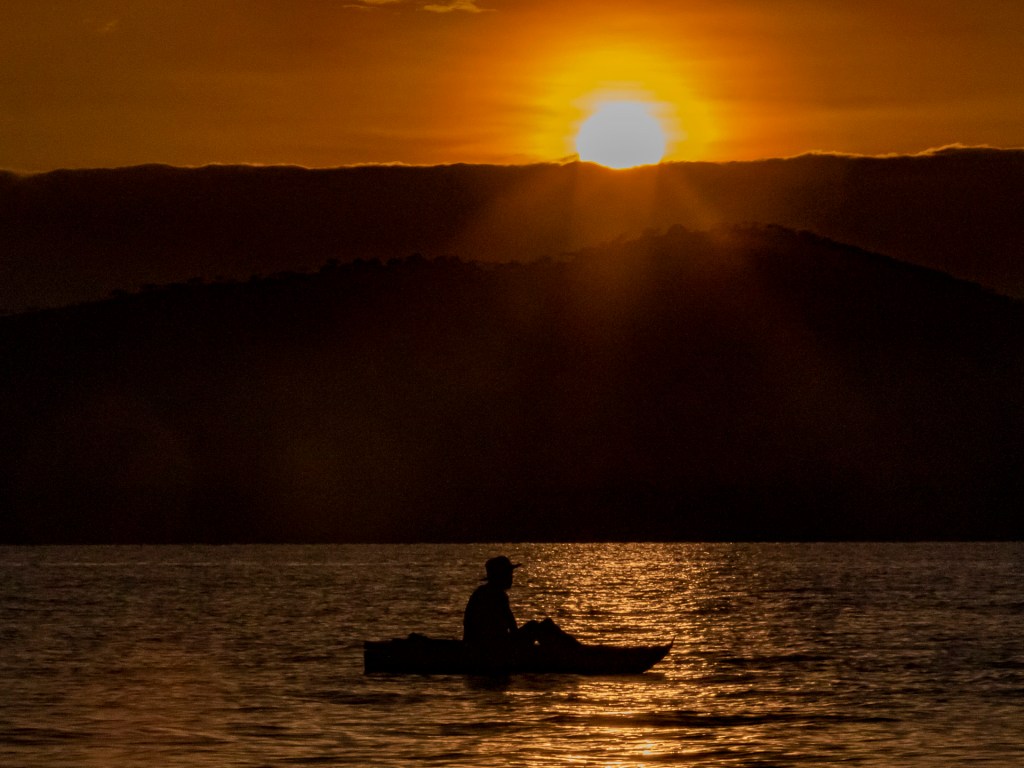
The second time we had an opportunity to take photos of indigenous people, on their permission, was, when a Turkana couple visited our camp site. They were wearing their fancy tribe costumes. What a remarkable appearance!

Boat Excursion around Lake Baringo. On 23rd November we had a half-day boat ride on the lake. This brought us very close to many species. The most remarkable drama was with an African Fish Eagle couple. They were attracted by casting fish to the lake for their food. A spectacular view was also to see two huge Verreaux’s Eagle-Owls roosting under the canopy of a giant Acacia tortillis. Other photographed species included Great Cormorant, African Darter, Senegal Thick-knee, Pied Kingfisher, Blue-cheeked Bee-eater, Carmine Bee-eater, Little Masked Weaver, and Golden-backed Weaver.

Nairobi National Park. The tour ended on 25th November. We left early for Nairobi National Park. We experienced heavy downpour all the way to Nairobi. The park was wet and still, rainy and muddy! Moses, our driver, was an excellent off-road driver and for that reason we managed to maneuver our way around the park where we saw many species of herbivores like Impala, Coke Heartbeest, Masai Giraffe, Common Zebra, Warthog, Buffalo, Rhinos, Lions and several species of birds. I photographed Yellow-necked Frankolin, Shelley’s Francolin, Yellow-billed Stork, Martial Eagle, Black-winged Kite, Rufous-naped Bush Lark, Winding Cisticola, Moustached Grass Warbler, Northern Pied Babbler, Yellow-crowned Biswhop, Holub’s Golden Weaver, and Brimstone Canary.
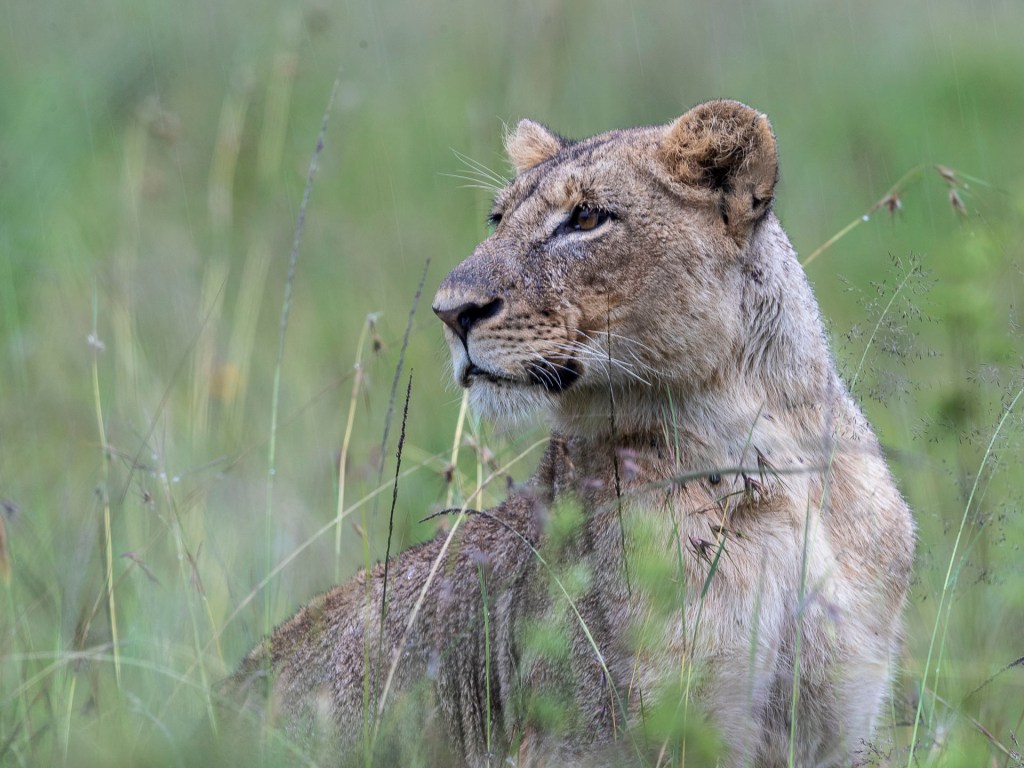
Epilog. This tour left a good flavor, again. My decision to reside in one camp and travel alone with my favorite guide was good to me. On the other hand, this is not a cheapest way of nature photography.
Thanks. My sincere thanks (again) are to Joseph Aengwo (contact information above), who has guided me at least 5 times previously. He also provided me with a detailed diary in order to draft this tour report. The next trip with Joe is already “on my drawing table”. This may be a week in Samburu and another one in Naivasha. Who ever knows. I am grateful also to a lot of other people, like our driver Moses, people at Tumbili Cliff Lodge, our boatman, people representing the unique original tribes of Kenya, and to several others not to be named.

